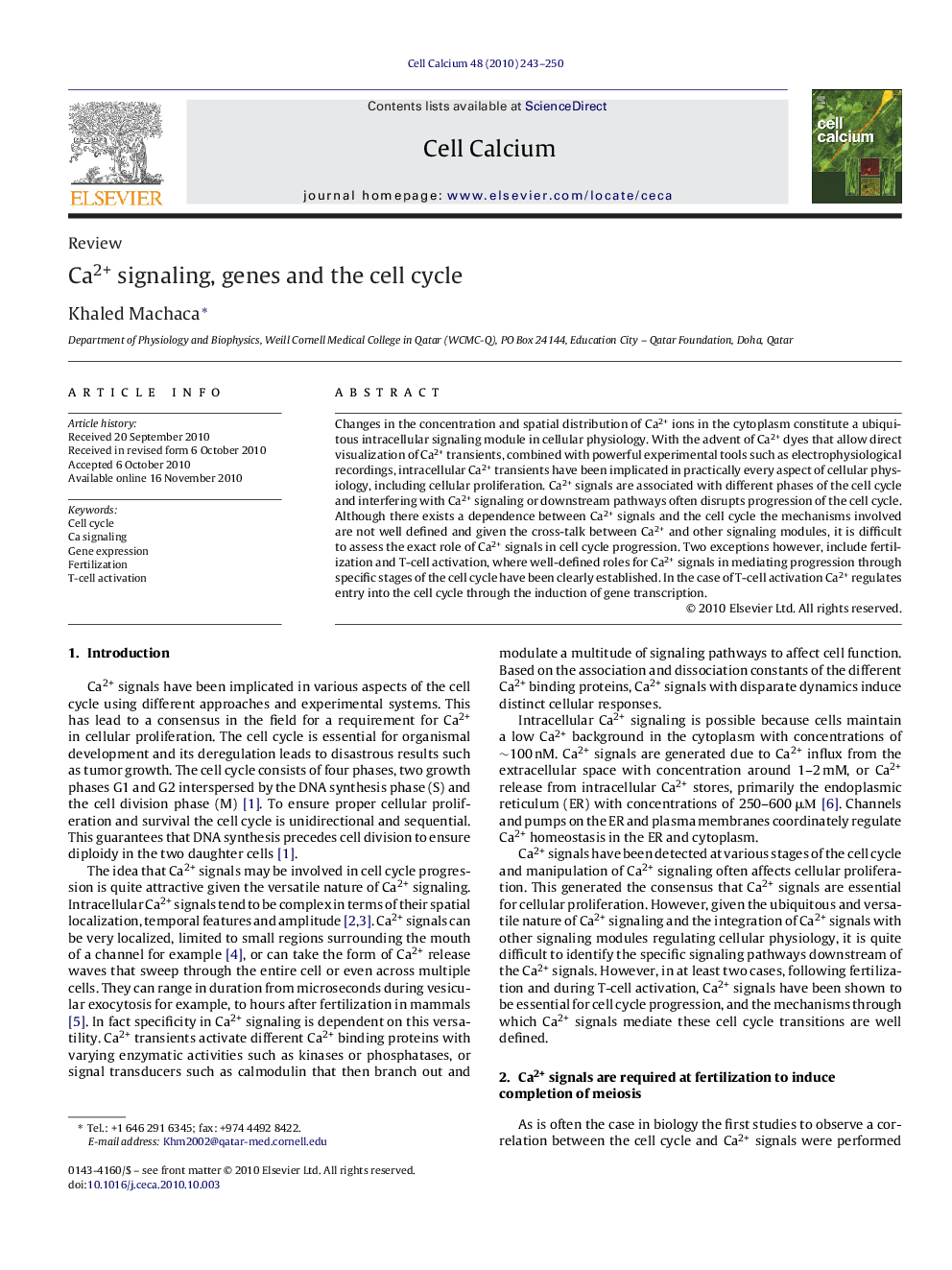| Article ID | Journal | Published Year | Pages | File Type |
|---|---|---|---|---|
| 10926382 | Cell Calcium | 2010 | 8 Pages |
Abstract
Changes in the concentration and spatial distribution of Ca2+ ions in the cytoplasm constitute a ubiquitous intracellular signaling module in cellular physiology. With the advent of Ca2+ dyes that allow direct visualization of Ca2+ transients, combined with powerful experimental tools such as electrophysiological recordings, intracellular Ca2+ transients have been implicated in practically every aspect of cellular physiology, including cellular proliferation. Ca2+ signals are associated with different phases of the cell cycle and interfering with Ca2+ signaling or downstream pathways often disrupts progression of the cell cycle. Although there exists a dependence between Ca2+ signals and the cell cycle the mechanisms involved are not well defined and given the cross-talk between Ca2+ and other signaling modules, it is difficult to assess the exact role of Ca2+ signals in cell cycle progression. Two exceptions however, include fertilization and T-cell activation, where well-defined roles for Ca2+ signals in mediating progression through specific stages of the cell cycle have been clearly established. In the case of T-cell activation Ca2+ regulates entry into the cell cycle through the induction of gene transcription.
Related Topics
Life Sciences
Biochemistry, Genetics and Molecular Biology
Cell Biology
Authors
Khaled Machaca,
